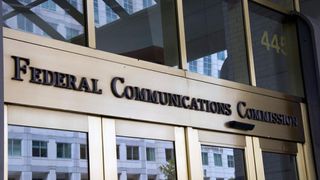GAO Recommends FCC Better Monitor Voluntary Wireless Net Resiliency

The General Accountability Office says the FCC should do more to promote and monitor wireless network resiliency. The FCC countered that might not be a bad idea and it would leverage existing lines of communications reach out to stakeholders, pointing out that the resiliency framework is voluntary.
That GAO assessment is according to a report released this week, which was conducted at the request of Rep. Frank Pallone (D-N.J.), who pressed the issue following Superstorm Sandy, which devastated his state.
The report found that since 2013, federal agencies including the FCC had taken steps to improve the resiliency of wireless networks. The FCC had proposed a rule requiring wireless nets to report how they had performed during emergencies, but that was superseded by a voluntary industry effort, the Wireless Network Resilience Cooperative framework, in which carriers agreed to allow roaming on each other's nets and said they would provide aggregated stats on network performance during emergencies--which means companies would not be singled out publicly.
Related: Hurricane Hit Stations Get Repack Reprieve
The report also found that the FCC had "limited formal plans to oversee or publicize the framework," and suggested a "More robust measures and a better plan to monitor the framework would help FCC collect information on the framework and evaluate its effectiveness," including developing specific, measurable, measurable objectives and promoting stakeholder awareness about outcomes to stakeholders, including local and state public safety officials.
“This report shows that we have made some progress on network resiliency since Superstorm Sandy, but there is still a lot of work that needs to be done,” Pallone said. “The Wireless Resiliency Cooperative Framework will save lives, and we must do more to ensure Americans benefit from the tools created by this agreement. I look forward to working with my colleagues in Congress and the FCC to follow through on this report’s recommendations so that there is greater awareness of this framework by state and local governments.”
Lisa Fowlkes, chief of the Public Safety and Homeland Security Bureau, addressed the reports recommendations in a letter to GAO, but the responses were all conditional. She agreed that monitoring "could" be useful to measure "the extent to which the network is being used" by "measuring outputs," and said the FCC would begin outreach to stakeholders in 2018. She also said that once the FCC has those outputs, it "may be beneficial" to monitor them so adjustments to the framework "may" be made. As to promoting awareness, she said that could be done through leveraging existing outreach mechanisms and "existing methods of regularly sharing information" that would "remain open."
Related: CES 2018 Recent Rainfall to Blame For Convention Center Power Outage
CTIA, which represents wireless carriers, responded to the report.
“The wireless industry has worked hard to maximize the resiliency of wireless networks during natural disasters," said assistant VP for regulatory affairs Matt Gerst. "The voluntary Wireless Network Resiliency Cooperative Framework facilitated flexible coordination to ensure wireless services were there for millions of people affected by the historic storms in 2017. We continue to work with the FCC, Congress, the public safety community and other stakeholders to enhance wireless resiliency during emergencies.”
In the wake of those historic hurricanes, CTIA last month released a new set of best practices to help maintain wireless service during natural disasters.
Broadcasting & Cable Newsletter
The smarter way to stay on top of broadcasting and cable industry. Sign up below
Contributing editor John Eggerton has been an editor and/or writer on media regulation, legislation and policy for over four decades, including covering the FCC, FTC, Congress, the major media trade associations, and the federal courts. In addition to Multichannel News and Broadcasting + Cable, his work has appeared in Radio World, TV Technology, TV Fax, This Week in Consumer Electronics, Variety and the Encyclopedia Britannica.

